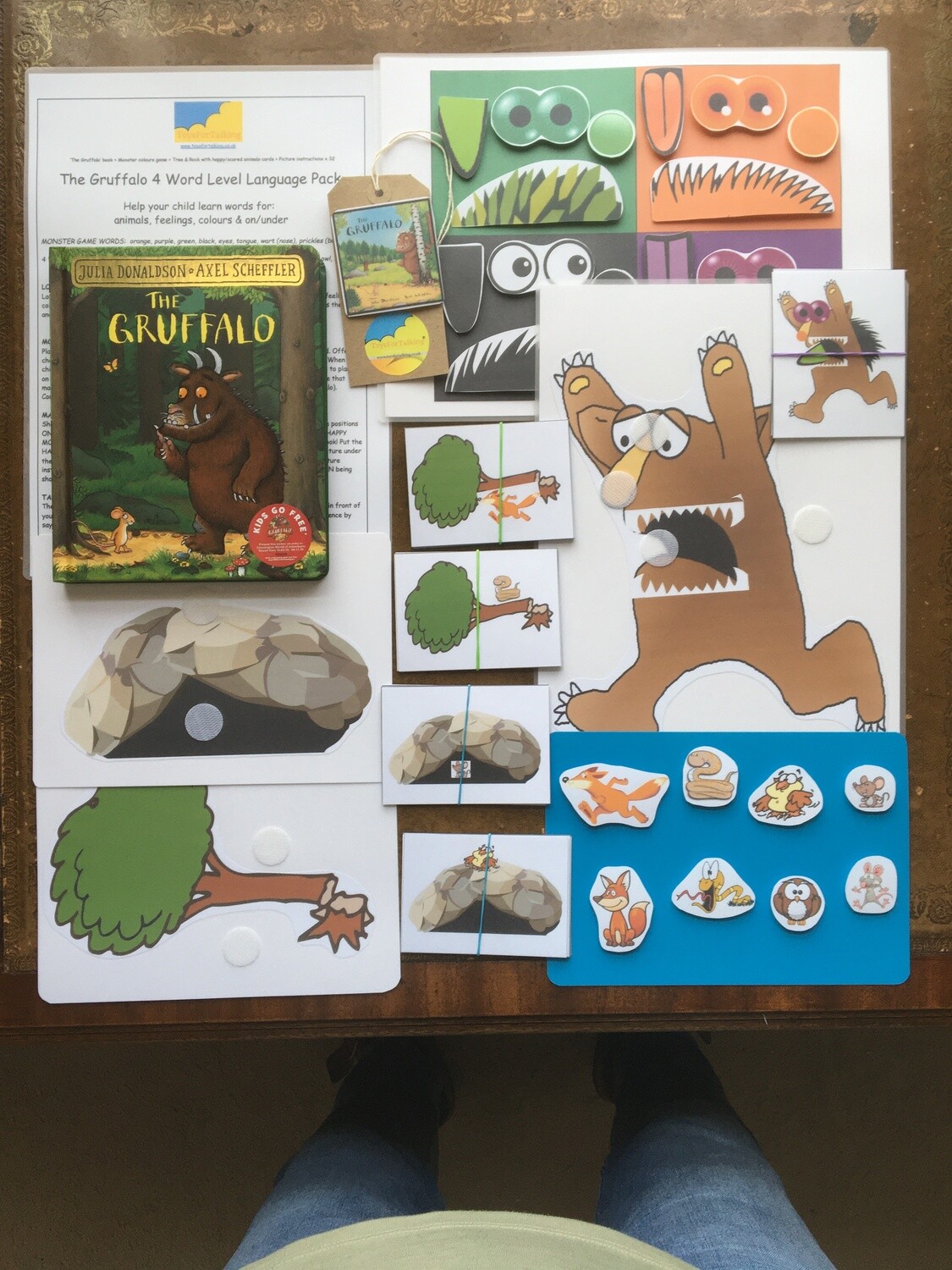The Gruffalo 4 Word Level Pack with Board Book
“The Gruffalo” book + monster game + picture cards + tips to help your child understand and use words for animals, feelings, colours, and on/under.
The book is a brand new board book: it measures approximately 16cm x 20cm x 2cm and has 26 pages.
There is an A4 size monster picture backed with card, and an A4 baseboard of 4 different coloured EYES, WART, TONGUE and PRICKLES, attached with Velcro dots, and 4 picture card prompts featuring a different colour for each body part: ORANGE, PURPLE, GREEN and BLACK.
There are 8 picture characters of a SCARED and HAPPY FOX, OWL, SNAKE and MOUSE attached to a baseboard with Velcro dots.
There are 2 place boards of a fallen tree trunk and a rock with Velcro dots positioned ON the tree/rock and UNDER the tree/rock.
There is a pack of 32 picture instruction cards, featuring each of the characters in each place (e.g. the scared fox on the tree, the happy snake under the rock).
The resources are designed to help children understand and use language for feelings, animals, colours, and on/under at the one word level (Who’s SCARED?, where’s the FOX?, which one’s PURPLE?, who’s UNDER the tree?), at the 2 word level (find the GREEN TONGUE; where’s the HAPPY MOUSE?), at the 3 word level (put the SCARED OWL ON the rock) and at the 4 word level (put the HAPPY MOUSE UNDER the TREE, show me the SCARED FOX ON the ROCK).
Finally there is an advice sheet, laminated in non-reflective Matt plastic, with tips for using the resources to boost your child’s speech and language.
All the pictures resources are laminated in non-reflective Matt plastic, and all the Velcro dots are positioned to be compatible with PECS products (Picture Exchange Communication System).
The picture resources and advice sheet fit into an A4 popper bag, and this fits with the book into an A4 zipped bag labelled with a brown parcel tag for convenience and durability.
This resource extends the language-boosting potential of a well-loved book, with picture games that work well for children with delayed language, for children with autism, and for children learning English as an additional language.

